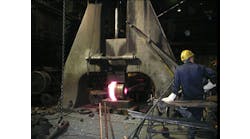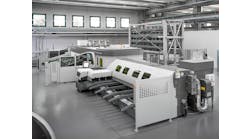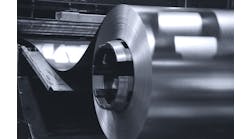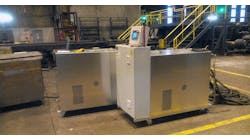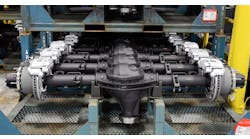Global raw-steel production remained essentially unchanged from July to August, totaling 156.04 million metric tons in the latest monthly total reported by the World Steel Assn. However, the August total is 3.4% higher than the August 2018 result, and the eight-month total for 2019 is now 3.32% higher than the January-August 2018 total.
With the particular exception of the Chinese steel industry, most nations’ year-over-year and year-to-date results are within one percentage point of the 2018 results. Some, in fact, are considerably lower. The results are notable because of declining manufacturing output across most major global indexes -- in addition to the uncertainty in global trade that is attributed to the tariffs controversy between the U.S. and China, which is premised largely on Chinese steel exports.
The World Steel Assn.’s monthly raw-steel production report represents totals from 64 countries, and about 99% of the output worldwide. Raw steel is the product of basic-oxygen and electric-arc furnaces, and cast into semi-finished products, like billets, blooms, and slabs. Most raw steel is produced on contract for large manufacturers, like automotive, appliance, and machinery builders. Less predictable is the amount produced for construction markets or for service centers and distributors.
Earlier this year World Steel forecast that total global consumption of steel in 2019 will increase 1.3% year-over-year to 1.735 billion metric tons. Expansion will be even smaller in 2020, rising just 1.0% year-over-year to 1.752 billion metric tons, it indicated.
While the 2019 year-to-date production results are in line with the "slow-but-steady growth" forecast by the World Steel Assn. in its late-2018 market forecast, nearly all the increase may be attributed to the 8.5% YTD rise in raw-steel output from China.
Chinese steelmakers produces 87.3 million metric tons of raw steel during August, 2.38% more than during July and 9.3% more than during August 2018. For the year-to-date, China’s industry is 9.1% ahead of its January-August 2018 total.
Chinese regulators have mandated an aggressive program of industry consolidation, curtailing excess capacity and phasing out environmentally noncompliant and outdated steelmaking capacity, and yet the production totals continue to rise. Recently IHS Markit reported Chinese steel inventories are up 27% year-over-year, affecting supplier markets like iron ore as well as downstream markets, as falling steel prices are discouraging manufacturers from buying at spot prices.
The over-production situation is more perplexing as industrial demand is apparently slumping worldwide. Raw-steel production in India rose just barely, to an estimated 9.35 million metric tons, which is just 1.5% higher than the August 2018 total. The nation’s YTD raw-steel output is up 4.4% to 7.57 million metric tons.
The Japanese steel industry produced 8.1 million metric tons of raw steel in August 2019, down -3.24% from July and down -7.8% versus August 2018. Japan’s eight-month total for 2019 is 67.6 million metric tons, -3.7% compared to 2018.
In South Korea, steelmakers produced 5.9 million metric tons of raw steel during August, down -1.66% from July and down -2.6% versus August 2018. The January-August 2019 YTD total for South Korea’s industry is now 48.4 million metric tons, just barely ahead (0.2%) of last year’s comparable figure.
Steelmakers across the 28-member European Union produced 11.4 million metric tons of raw steel during August, -2.2% less than August 2018, and bringing the regional year-to-date production total to 109.1 million metric tons of raw steel, a -2.9% decrease from the 2018 eight-month total.
Steelmakers in the United States produced 7.5 million metric tons (8.3 million short tons) of raw steel during August, 1.0% more than during July and 0.3% more than during August 2018. The January-August 2019 total for U.S. raw-steel production is 59.23 million metric tons (65.3 million short tons), a rise of 4.1% over 2018.

